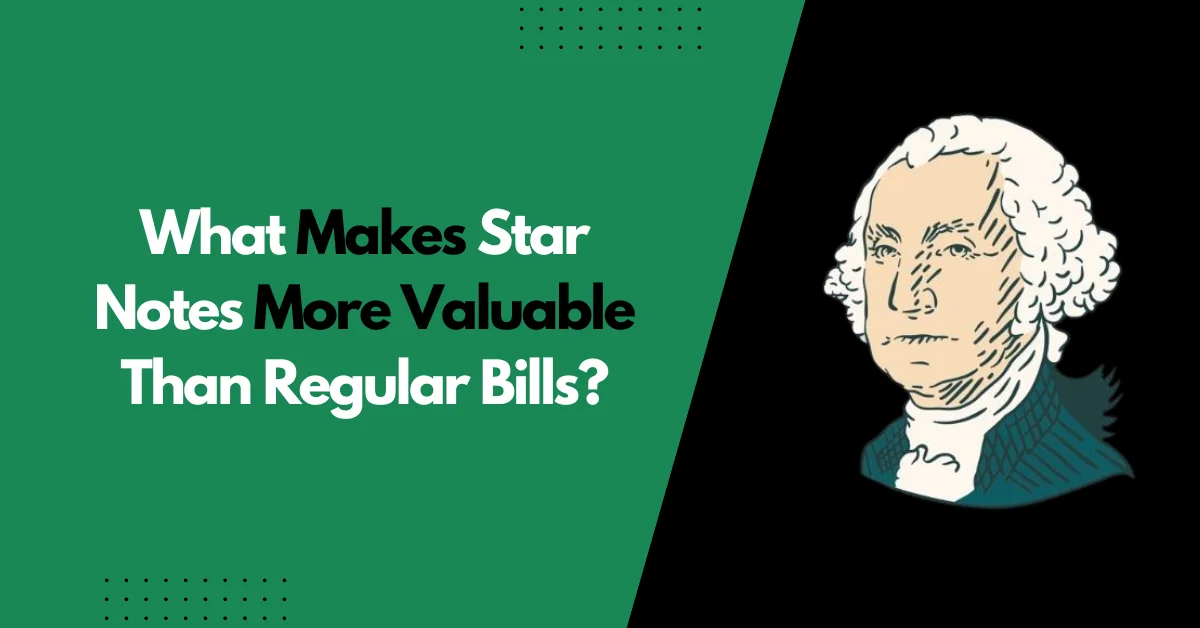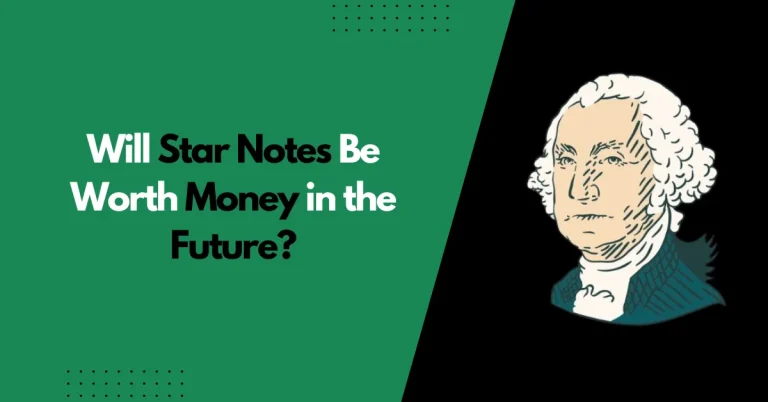What Makes Star Notes More Valuable Than Regular Bills?
Have you ever spotted a small star next to a dollar bill’s serial number and wondered what it means? That tiny star could mean the bill is worth much more than its face value.
Star notes are rare, and their limited supply, special production process, and collector demand all boost their worth.
What Is a Star Note?
A star note is a U.S. paper currency note issued by the Bureau of Engraving and Printing (BEP) to replace a misprinted or damaged note. Instead of printing an identical serial number, the BEP adds a star symbol at the end of a new serial number to show it’s a replacement.
For example:
- A regular note might read: B12345678C
- A replacement note would read: B12345678★
This change ensures all serial numbers remain unique, which is a rule in U.S. currency printing.
Why Are Star Notes So Rare?
Star notes are not printed on demand. They are only made when a printing error occurs or a note is damaged during production. This creates a natural rarity. According to the Bureau of Engraving and Printing, the number of star notes printed is significantly less than regular bills.
For example:
- A typical print run might produce 320 million regular notes.
- Star notes from that same run might total just 640,000.
That’s less than 0.2% of the total print making star notes hard to find in circulation.
What Increases a Star Note’s Value?
Several factors determine a star note’s value beyond face value:
1. Rarity of the Print Run
Smaller runs mean higher value. If the star note is from a short print run, collectors pay more. A print run of fewer than 640,000 star notes is considered rare by currency tracking sites like MyCurrencyCollection.
2. Denomination and Series
Higher denomination star notes, such as $50 or $100, are harder to find and usually more valuable. Certain series years, like 2004A or 2013, also have smaller runs, increasing their appeal.
3. Serial Number
Unique or low serial numbers can raise a note’s worth. Examples:
- 00000001★ (first printed note)
- 12344321★ (palindromes or repeaters)
- 99999999★ (solid or fancy numbers)
These patterns are highly sought after by collectors.
4. Condition of the Bill
Collectors look for uncirculated or crisp bills. A note in Gem Crisp Uncirculated (GCU) condition can be worth many times its face value. Notes with folds, tears, or marks are less valuable.
5. Demand from Collectors
When many collectors want a specific series or print, demand drives up prices. Online platforms like eBay or Heritage Auctions often show star notes selling for $10 to over $1,000, depending on these variables.
How Can You Tell If a Star Note Is Valuable?
To check a star note’s potential value:
- Look at the serial number for unique patterns.
- Check the series year and note type (e.g., $1, $5, $20).
- Visit official currency collectors’ databases like:
- Star Note Lookup
- United States Currency Education Program
- Compare the print run number using lookup tools.
A $1 star note from a short run in uncirculated condition can sell for $20 to $50, while rarer combinations can fetch hundreds or even thousands.
Examples of Valuable Star Notes
Here are examples of high-value star notes:
| Denomination | Year | Details | Approximate Value |
| $1 | 2013 | Low print run, fancy serial | $50–$100+ |
| $20 | 2004A | Short run, great condition | $200+ |
| $100 | 1996 | Rare year and clean print | $500–$1,200 |
| $2 | 2003 | Uncirculated, odd run | $30–$80 |
Note: Prices vary based on demand, condition, and serial number patterns.
Where to Sell or Collect Star Notes?
If you own a star note, you can:
- List it on auction platforms like eBay or Heritage Auctions.
- Join currency collecting forums or groups on Reddit, Facebook, or PCGS.
- Visit coin and currency dealers for evaluations.
- Use the Numismatic Guaranty Corporation (NGC) or Professional Currency Grading Service (PCGS) to get your note graded officially.
Grading services assign value based on wear, ink quality, paper condition, and printing accuracy.
Why Do Collectors Pay More for Star Notes?
Collectors see star notes as:
- Unique due to their one-time purpose.
- Scarce, especially in top condition.
- Visually distinct with the ★ symbol.
- Historically significant, since they tell a story of a printing issue.
- Investment-worthy, as value may rise over time.
It’s similar to how misprinted coins or stamps gain value rarity and story matter.
How Many Star Notes Exist Today?
It’s hard to know the exact number of star notes in circulation because:
- They aren’t tracked by banks.
- Many go unnoticed by the public.
- Others get damaged or destroyed.
However, experts estimate that less than 0.5% of all currency in circulation is made up of star notes. This low figure makes them hidden gems in daily cash use.
Are Star Notes Still Printed Today?
Yes. The Bureau of Engraving and Printing still prints star notes for modern currency. Errors happen even with advanced machines, so star notes are part of the ongoing printing process.
Recent series like 2021 and 2023 have documented star note runs.
You can find current star note data on the BEP’s official site and Federal Reserve publications.
Final Thoughts: Why Star Notes Are Truly Special
Star notes offer more than just rarity they hold historical and collector value. Their worth depends on:
- How rare they are
- What condition they’re in
- Their serial number
- How many collectors want them
If you happen to find one in your wallet, hold onto it and check the details. It might be worth far more than just spending it.
Contents
- 1 What Is a Star Note?
- 2 Why Are Star Notes So Rare?
- 3 What Increases a Star Note’s Value?
- 4 How Can You Tell If a Star Note Is Valuable?
- 5 Examples of Valuable Star Notes
- 6 Where to Sell or Collect Star Notes?
- 7 Why Do Collectors Pay More for Star Notes?
- 8 How Many Star Notes Exist Today?
- 9 Are Star Notes Still Printed Today?
- 10 Final Thoughts: Why Star Notes Are Truly Special

